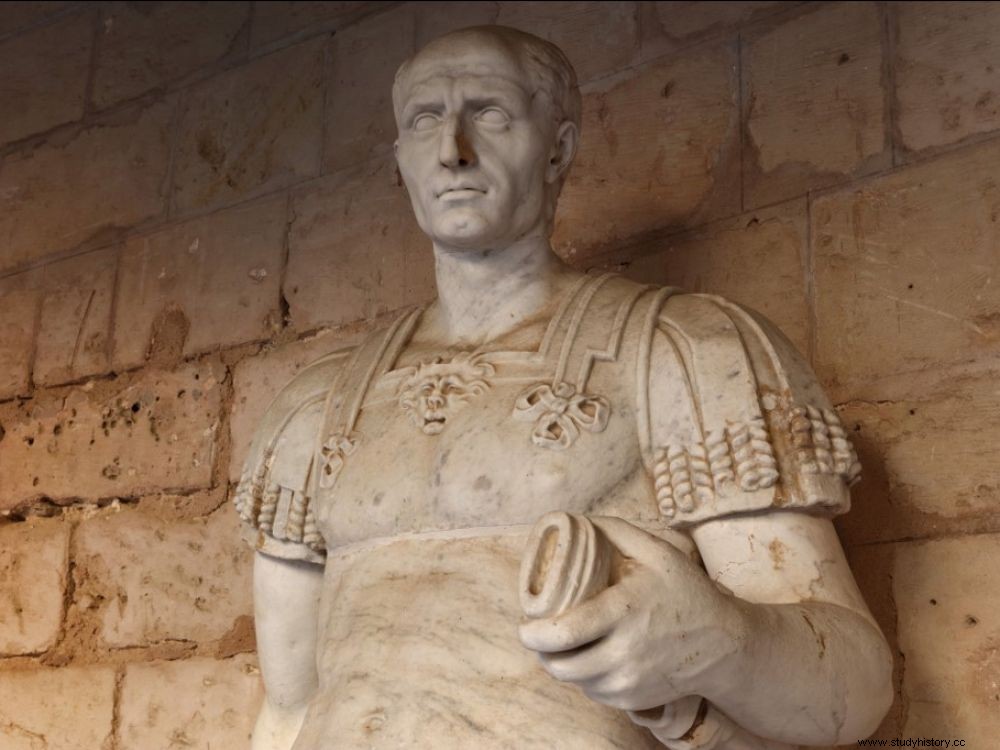Analysis of volcanic ash has linked the low temperatures experienced in Rome in 44 BCE to the eruption of a volcano in Alaska.

Marble statue of Julius Caesar, 16th century.
The assassination of Julius Caesar in 44 BCE sparked a nearly two-decade-long power struggle that marked the beginning of the transition from the Roman Republic to the Roman Empire. According to historians, this period was marked by strange sightings in the sky, a particularly cold climate and great famines. According to a new study published on June 22, 2020 in the journal PNAS , an eruption in Alaska could be the cause of these disturbances.
Two volcanic eruptions two years apart
An international team of researchers has been able to link two historical events that a priori had no connection between them:a period of intense cold in Rome in 44 BC and a volcanic eruption in Alaska. Written sources dating from this period depict a difficult time in the Mediterranean basin:the population suffered from abnormally low temperatures, crop failures, disease and famine. Troubles that were to culminate with the fall of the Roman Republic. Scientists have long wondered:could a volcano, even one located on the other side of the Earth, have sealed the fate of this republic?
The analysis of volcanic ash (tephra) trapped in ice cores taken in the Arctic has made it possible to answer this question. Swiss scientist Michael Sigl and American Joe McConnell, of the Desert Research Institute (DRI) in Reno, Nevada, began their research after the discovery in 2019 of a particularly well-preserved layer of ash in an ice core. New analyzes of other samples taken in Greenland and Russia, some of which had been taken in the 1990s and preserved in archives until today, have also been carried out. All this data has made it possible to find the traces of two distinct volcanic eruptions:a powerful but brief one that occurred in 45 BC and a larger one in 43 BC, the fallout of which lasted two years.
A geochemical analysis was then carried out on samples of ice dating from the second eruption, and proved to correspond perfectly with that of the Okmok volcano, one of the largest of the last 2,500 years. "The match between the swabs couldn't be better “, explained in a press release the volcanologist Gill Plunkett, of Queen’s University of Belfast.
Crop problems on top of political upheaval
The team also collected other pieces of evidence around the world, ranging from weather records based on analysis of tree rings in Scandinavia, to the formation of caves in northern China. These data were used to feed a climate model, according to which the two years following the eruption were among the coldest in the northern hemisphere in the past 2,500 years. According to this model, average temperatures were some 7 degrees below normal during the summer and autumn following the eruption, and precipitation was almost 400% higher than normal in southern Europe. during the fall.
"In the Mediterranean region, these wet and extremely cold conditions during spring and autumn, very important seasons for agriculture, probably reduced crop yields and created supply problems, at the time of the upheavals policies of this period ", detailed archaeologist Andrew Wilson of the University of Oxford. These events also coincided with the failure of the Nile to cover the plains that year, which resulted in diseases and famines, added Yale University historian Joe Manning.
"An interconnected world, even 2,000 years ago "
The eruption could also explain the strange atmospheric phenomena observed then, such as solar halos, a darkened Sun, or an optical phenomenon showing the image of three suns in the sky. But the authors point out that many of these observations were made before the eruption in Alaska, and could be linked to a smaller eruption of Etna in 44 BC.
According to Joe McConnell, while many factors contributed to the fall of the Roman Republic, as well as the Ptolemaic kingdom in Egypt - also precipitated by the rise of the Roman Empire - the eruption in question did play a big role. , and contributes to fill a lack of knowledge which hitherto perplexed historians. "Finding evidence that a volcano on the other side of the world erupted and actually helped (...) the rise of the Roman Empire is fascinating ", said the researcher. "It shows how interconnected the world was, even 2,000 years ago ", he added.
